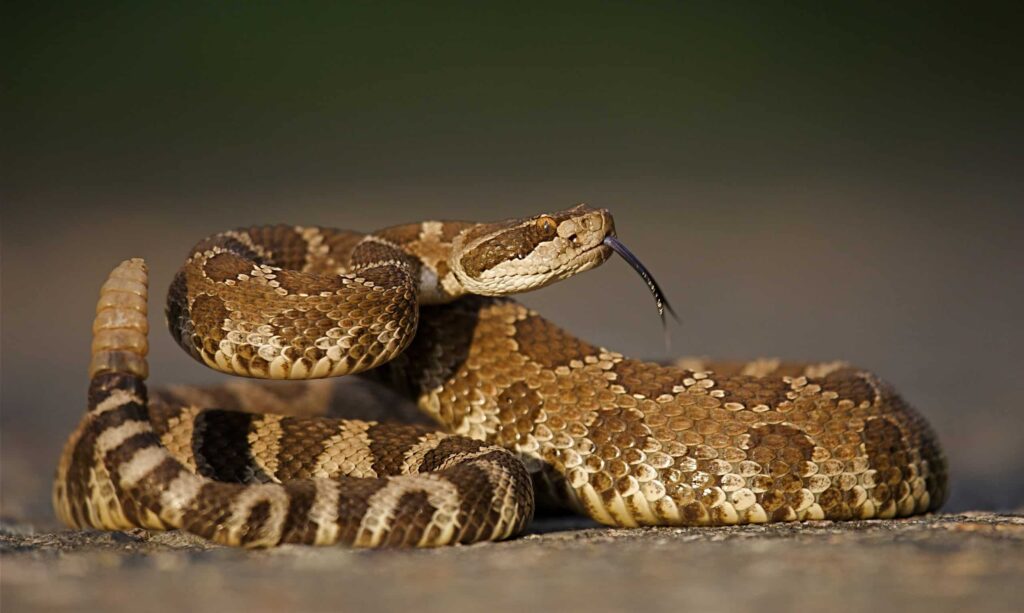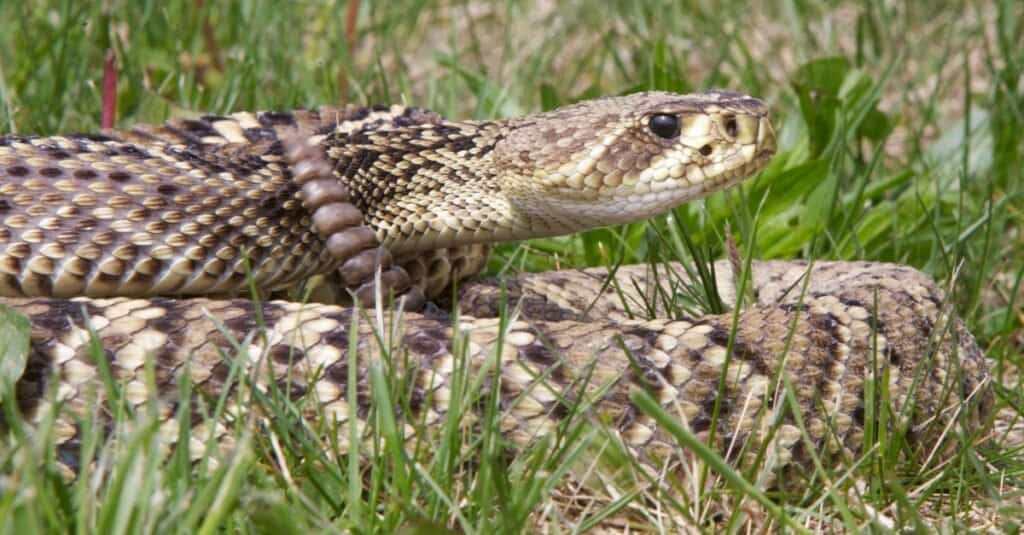Continue reading for our analysis...

When you think of going for a bike ride, you may imagine strolling along a dirt or paved path surrounded by beautiful nature. Perhaps you imagine zooming down the bike lane of a big city. Whatever you picture, it likely doesn’t involve a den of wild rattlesnakes.
A man named Ryan with a YouTube channel called “Ryan First Diver,” with nearly 40,000 subscribers takes a ride directly to a rattlesnake den. He gets a call about two young mountain bikers encountering a rattlers’ den on the side of the bike trail.
By the time he gets there, you quickly see and hear the rattlesnakes. Rattlesnakes are among the most easily recognized reptiles in the animal kingdom, not only due to their outward look but also due to the way they move their tails in response to danger to warn potential prey to keep away. Their name comes from the sound a rattlesnake produces when it shakes its tail, which is similar to a high-pitched baby rattle.

Rattlesnakes hiss, which sounds almost like a cat, and shake their rattles in order to dissuade predators from approaching.
©Tom Reichner/Shutterstock.com
When Ryan approaches the den, he sees one female rattlesnake that he mentions could be pregnant. Female rattlers typically measure 36 inches in length and have a larger physique than their male counterparts. Ryan later meets with the original mountain bikes that reported the den in the first place.
Rattlesnakes frequently construct dens out of abandoned rodent burrows since they are unable to excavate holes for themselves. Snakes frequently seek areas on steep hillsides with lots of sunlight. These slithering critters can also hibernate behind logs, stacks of wood, or rock.
When they approach the second den of the video, unless you’re an expert, you likely wouldn’t even notice it. They slowly walk closer to the entrance and sure enough, spot a relaxing rattlesnake, all curled up, almost as if sleeping.
One comment under the video reads, “This dude is crazy walking in there with shorts on and exposed legs! There’s no way I’d do that.” We couldn’t agree more. If you are going to go searching for rattlesnake dens, be sure to have long pants and closed-toe shoes on for protection.
Ryan goes on to suggest that anyone mountain biking should stay on north-facing slopes that are shaded. This will prevent any unwanted encounters with rattlesnakes. Would you want Ryan’s job? Imagine someone calls you about a dangerous animal and your job is to come to address the situation. It takes a brave and educated individual to handle these slithery serpents as well as he does. Check out the wild video below to get an up-close and personal rattlesnake experience.
Where Do Rattlesnakes Live?
All species of rattlesnake are native to the Americas, from southern Canada to Argentina. The greatest concentration of these snakes is in the southwestern states of the U.S. and the northern part of Mexico. Arizona is known for having the most species residing within its borders than any other U.S. state. They tend to love the Southwest’s desert sands and dry climate.
They tend to stay in the same area for generations, and the same snake family will often re-use their dens hidden in rocky crevices, sometimes for longer than 100 years.

Rattlesnakes evolved in North America.
©Scott Delony/Shutterstock.com
How Long Do Rattlesnakes Live?
Rattlesnakes live in the wild for a range of 10 to 25 years. Females only reproduce every one to three years.
The biggest predator for rattlesnakes is actually another snake: the king snake. Black snakes also go after rattlers. Owls, eagles, and hawks, as well as wild cats, foxes, coyotes, and sometimes turkeys, hunt and feast on wild rattlesnakes. Humans also don’t mind snake meat and will use skins to make boots, shoes, belts, handbags, and other items. Our cars are also a big threat to rattlesnakes, and many are run over along roads each year.

Untreated rattlesnake bites can result in death.
©iStock.com/Tee-roy
Is It Normal For Rattlesnakes to Attack Humans?
Although their venom can seriously injure or kill humans, rattlesnakes prefer to avoid any human contact. Untreated bites can result in death, but that often is because an individual failed to seek treatment. Some are more venomous than others, but it is best to go to the hospital as quickly as possible, within 30 minutes at best. Don’t suck out the venom or do anything odd aside from treating the wound and letting the professionals do their job.
To avoid them while hiking or doing outdoor activities, stay on the trail. If you do come close to one, avoid sudden movements and back away. Rattlesnakes are not aggressive and will not pursue.

The Eastern diamondback is another snake close to a timber rattlesnake but with a few differences.
©iStock.com/NajaShots
Timber Rattlesnake vs Eastern Diamondback
Timber rattlesnakes and eastern diamondbacks are both venomous snakes with long formidable fangs. They might look alike, but they have different skills and habitats.
Timber rattlesnakes, while generally found on the ground, have been known to climb trees. They are also good swimmers, able to swim on the water’s surface and below, too. Eastern diamondbacks can also swim well but don’t prefer the water, and they are not very good climbers.
A timber rattlesnake’s venom contains crotoxin, which causes pain, swelling, bleeding, and neurological symptoms in victims. This is quite nasty and can kill humans. The venom of an eastern diamondback snake, which it can inject in large quantities at once, contains hemotoxin, which can cause tissue damage and paralysis.
The rattlesnake prefers the climate in the southern U.S., while the eastern diamondback would rather the eastern U.S., though both are found throughout the whole Americas.
Discover the "Monster" Snake 5X Bigger than an Anaconda
Every day A-Z Animals sends out some of the most incredible facts in the world from our free newsletter. Want to discover the 10 most beautiful snakes in the world, a "snake island" where you're never more than 3 feet from danger, or a "monster" snake 5X larger than an anaconda? Then sign up right now and you'll start receiving our daily newsletter absolutely free.
Thank you for reading! Have some feedback for us? Contact the AZ Animals editorial team.






